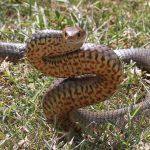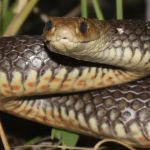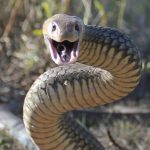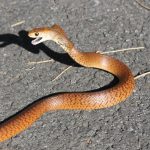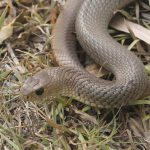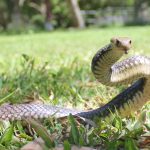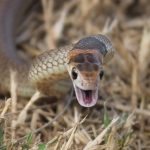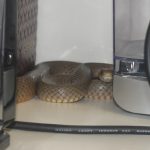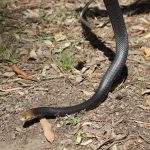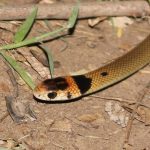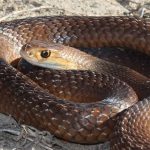- Eastern Brown Snake (Pseudonaja textilis) colour variants from Snake Out Brisbane Snake Catchers.
- Eastern Brown Snake (Pseudonaja textilis) colour variants from Snake Out Brisbane Snake Catchers.
- Eastern Brown Snake (Pseudonaja textilis) colour variants from Snake Out Brisbane Snake Catchers.
- Eastern Brown Snake (Pseudonaja textilis) colour variants from Snake Out Brisbane Snake Catchers.
- Eastern Brown Snake (Pseudonaja textilis) colour variants from Snake Out Brisbane Snake Catchers.
- Eastern Brown Snake (Pseudonaja textilis) colour variants from Snake Out Brisbane Snake Catchers.
- Eastern Brown Snake (Pseudonaja textilis) colour variants from Snake Out Brisbane Snake Catchers.
DESCRIPTION – Highly variable, often a uniform shade of brown but ranging from cream to black, with patterns including speckles and dark bands. Juveniles have a dark head and nape, may be heavily banded. Creamy underside, usually with bright orange-red speckles. May reach 2.4m but usually 1.1 to 1.8m, 17 mid body scales, 180-235 ventral, 45-75 sub-ventral, anal scale divided. Family: Elapidae.
DISTRIBUTION – Across the East Coast and inland ranges of QLD, NSW, Victoria and SA, some arid areas of the NT and in the WA Kimberly region. Isolated populations in New Guinea. Habitats range from sclerophyll forest and coastal heaths to savannah, arid scrubland, grasslands and farmlands. Common in urban and semi-urban areas.
ECOLOGY – Generally diurnal, nocturnal depending on temperatures. Juveniles almost exclusively reptile predators, maturing adults undergo ontogenetic venom shift (venom changes to attack mammalian blood) as adults eat more mammals e.g. rats & mice. Oviparous, 6-28 eggs.
VENOM – HIGHLY VENOMOUS – Contains potent neurotoxins and coagulants, blocking nerve signals to respiratory systems and causing severe coagulopathy, including blood clots and hemorrhage. Defensive when provoked or cornered, bites are responsible for most Australian snake-related fatalities.
Updated November 2019 from Eipper, S. & Eipper, T. (2019) A Naturalists Guide To The Snakes Of Australia. John Beaufoy Publishing.

